Castles along The Rhine
8 Days | Basel to Amsterdam
2024 | Find inspiration in the romantic, soul-stirring beauty of the fabled Rhine.
Learn More
Choose when you want to travel
You’ll find an ideal mix of old and new, historic and modern, in some of Europe’s liveliest cities on this journey. Spend time in Amsterdam and Maastricht, allowing you to discover great shopping, countless active options, and mouthwatering foodie destinations. Explore Belgium’s historical and contemporary capital city of Brussels, home of a rich and vibrant culinary tradition. Discover Antwerp’s penchant for tasty treats, including Belgian waffles, beer, pralines, and chocolate on a walking discovery tour of the diamond capital of the world. In splendid Maastricht, a city with hundreds of national heritage sites, you’ll uncover why it’s known as one of the most beautiful cities in all of Holland. Follow in Van Gogh’s footsteps with a stroll through Nuenen, where you’ll wander through the sites that inspired much of his art. Delight in a visit to Kinderdijk to see its 19 well-preserved windmills that have stood the test of time.
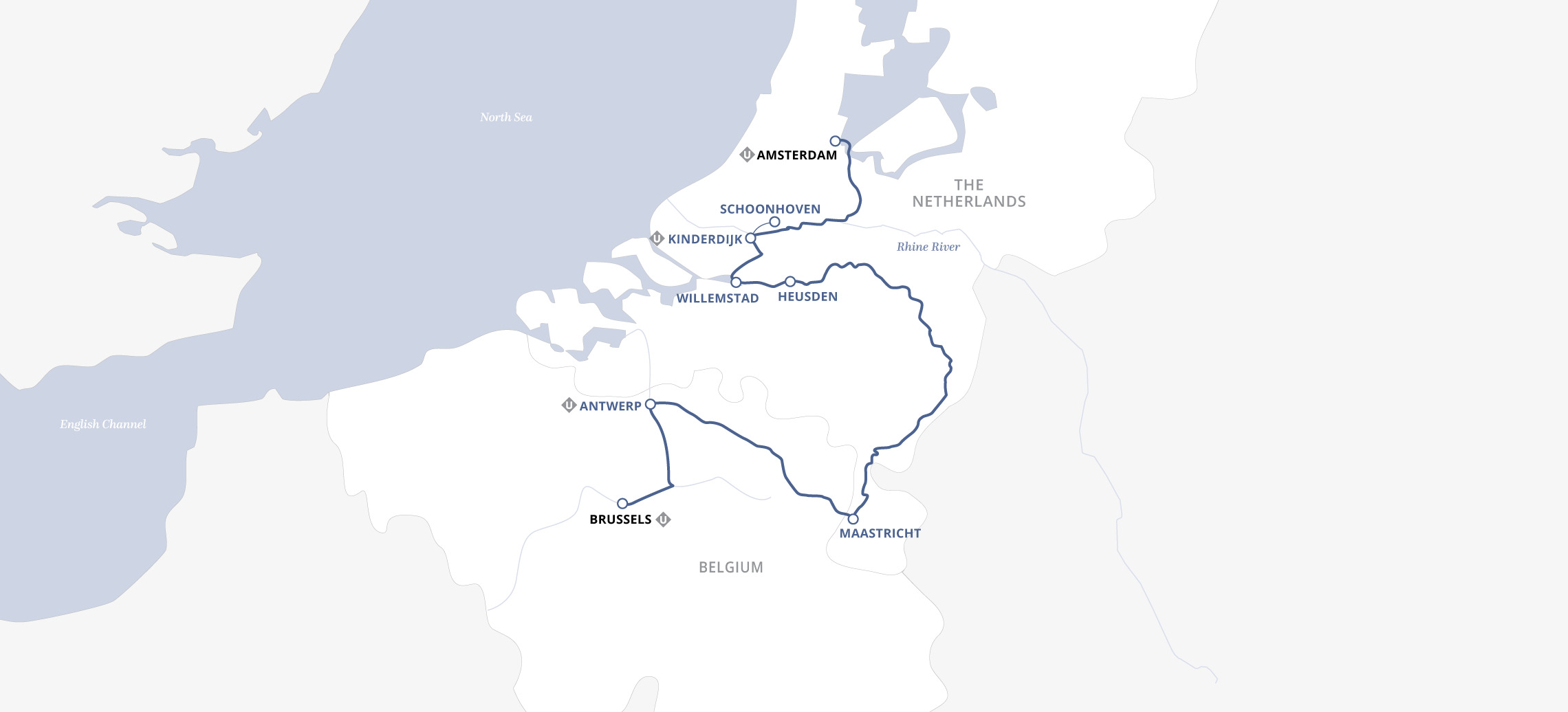
Day 1
Brussels (Embark)
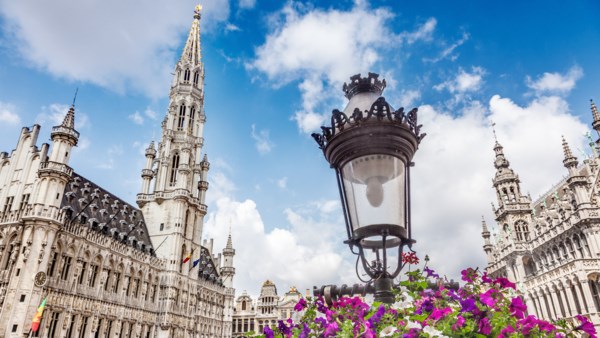
Arrive at Brussels Airport. If your cruise package includes a group arrival transfer or if you have purchased a private transfer, you will be greeted by a Uniworld representative and transferred to the ship.
Day 2
Brussels
Brussels, the capital of Belgium, offers a treasure trove of historic architecture, along with a rich culinary tradition and a vibrant culinary capital. Food lovers will be lured by the divine aromas drifting from delightful cafés and chocolate shops. After a panoramic tour of Belgium’s historical and contemporary capital city, get an up-close view of the city center with a guided tour on foot. Then, treat yourself to some delicious Belgian waffles.
In the evening, a special Captain’s Welcome Reception and Dinner will be prepared for you.
On our way into the city center, we'll take you on a panoramic tour of the major sightseeing spots in Brussels, such as the Royal Residence, Chinese Pavilion, and Japanese Pagoda. From there, we'll set out on foot to see the city up close—and taste an iconic local sweet along the way: Belgian ...
On our way into the city center, we'll take you on a panoramic tour of the major sightseeing spots in Brussels, such as the Royal Residence, Chinese Pavilion, and Japanese Pagoda. From there, we'll set out on foot to see the city up close—and taste an iconic local sweet along the way: Belgian waffles! Walking around, it may feel like you see them on practically every street, but we’ll make sure you try one of the best examples around for a real taste of what makes Belgian waffles so delicious.
Day 3
Antwerp

It may be the diamond capital of the world, but Antwerp is also known for a number of other sought-after cultural gems, including Golden Age art, Belgian beer, waffles, pralines and fries, chocolate, and more. Your walking tour of Antwerp, complete with Belgian treats, features the City Hall and Market Square.
In the center of Antwerp, you’ll find a whole museum dedicated just to Belgian chocolate. Walk inside to discover the love story that is Belgium’s relationship with the sweet treat, follow the path of the cocoa bean from the farms of Ecuador to the world’s largest cocoa storage...
In the center of Antwerp, you’ll find a whole museum dedicated just to Belgian chocolate. Walk inside to discover the love story that is Belgium’s relationship with the sweet treat, follow the path of the cocoa bean from the farms of Ecuador to the world’s largest cocoa storage port in Antwerp, and of course, you’ll sample a variety chocolates during your time here.
It may be the diamond capital of the world, but Antwerp is also known for a number of other gems—maybe just not of the rock variety. Step onto the streets of Antwerp and take in the Golden Age art, sip Belgian beer, and taste the waffles, pralines, fries, and chocolates that make Antwerp,...
It may be the diamond capital of the world, but Antwerp is also known for a number of other gems—maybe just not of the rock variety. Step onto the streets of Antwerp and take in the Golden Age art, sip Belgian beer, and taste the waffles, pralines, fries, and chocolates that make Antwerp, Antwerp. This walking discovery tour takes you through the sights, sounds, smells, and tastes of the city. Continue on and enjoy tastings of other sorts—perhaps a local spirit or even the catch of the day as you journey past the Steen Castle, City Hall, and the Brabo Fountain.
Day 4
Maastricht

Your first stop in The Netherlands—Maastricht—is a city with more than 1,670 national heritage sites, some of which can be seen on your Old Town walking tour. And not only that, but it’s known as one of the most beautiful and romantic cities of Holland and loved for its convivial lifestyle and historic center, which has long played a strategic role in European politics. Or you can choose to make a pilgrimage to the 65-acre Netherlands American Cemetery and memorial, the final resting place of 8,301 U.S. soldiers who perished during the Second World War.
Meander through the historic city center of Maastricht with your local guide and take in all of the city’s prettiest sites. During your walk, you’ll discover the picturesque streets of the Stokstraat Quarter and various charming promenades across the old and new city centers....
Meander through the historic city center of Maastricht with your local guide and take in all of the city’s prettiest sites. During your walk, you’ll discover the picturesque streets of the Stokstraat Quarter and various charming promenades across the old and new city centers. You’ll take a peek into City Hall to see the wall tapestries, stucco, ceiling paintings, and mantelpieces inside. As you go, you’ll hear the fascinating stories and amusing anecdotes of Maastricht history, its progression from Roman settlement to early industrial powerhouse, and the Mestreechter Geis (or “the Spirit of Maastricht”, which is what they call their local way of life).
More than 8,000 American soldiers lie under white crosses and Stars of David among the rolling hills of Limburg. They died fighting in this area following the Normandy invasion, earning, as the commemorative inscription says, "praise that will never die." A memorial is inscribed with the names of...
More than 8,000 American soldiers lie under white crosses and Stars of David among the rolling hills of Limburg. They died fighting in this area following the Normandy invasion, earning, as the commemorative inscription says, "praise that will never die." A memorial is inscribed with the names of another 1,723 whose remains were never found or identified. It's the only American battlefield cemetery in the Netherlands; infantrymen and pilots, mechanics and bombardiers are interred in this serene and surprisingly uplifting place. Not only Americans visit this memorial. Thousands of families from the Netherlands and surrounding nations come to honor those who fell liberating their countries from the Nazi occupation.
Day 5
Cuijk (Nuenen), Heusden

Follow in Van Gogh’s footsteps today as you stroll through Nuenen, where the artist once lived and painted “The Potato Eaters.” After a delicious lunch, you may choose to walk or cycle through Heusden, or choose from a panoply of other ways in which you can experience this charming region.
Vincent van Gogh produced 195 paintings and numerous watercolors and sketches in the two years he lived in Nuenen, where his father was vicar; among the work he did here is The Vicarage at Nuenen. His studio was the converted laundry room in that vicarage, which his father did not think was...
Vincent van Gogh produced 195 paintings and numerous watercolors and sketches in the two years he lived in Nuenen, where his father was vicar; among the work he did here is The Vicarage at Nuenen. His studio was the converted laundry room in that vicarage, which his father did not think was suitable, though he assured Theo van Gogh that they had installed a wood stove, if not a large window (Vincent didn't want one). Here Van Gogh created the character studies that became The Potato Eaters. He wrote to his brother: "It's true that I can't make anything financially from my work here—but I'm making really good friends here—and I believe they'll become even better." Begin at the Vincentre, with its interactive displays about the people the artist knew and the work he produced here, and then walk through the village, taking the routes the painter took and seeing sights he would have seen. He painted three scenic windmills that still stand; perhaps as you enjoy an authentic Dutch country lunch, you'll get a sense of the countryside as the artist experienced it.
The pretty squares and harbors where pleasure craft bob give little hint of Heusden's exciting past. A water fortress was first erected here in the 12th century, and many a medieval battle was fought in this region. The characteristic star shape of the fortress dates much sooner though, to when the ...
The pretty squares and harbors where pleasure craft bob give little hint of Heusden's exciting past. A water fortress was first erected here in the 12th century, and many a medieval battle was fought in this region. The characteristic star shape of the fortress dates much sooner though, to when the town was founded in 1649 at the end of the Eighty Years’ War that won Holland its independence from Spain.
You may opt for one of four different ways to explore this historic village: bike through the town and along the harbor with a guide, make sausage-filled rolls (a.k.a. worstenbroodje) with a local baker, taste cheese at a nearby dairy farm, or tour the unusual 17th-century fortress.
Day 6
Schoonhoven (Kinderdijk)

Bike around the silversmithing town of Schoonhoven, best known for its abundant silversmiths, clock makers, and quaint shop-lined avenues. Or venture forth to captivating Kinderdijk to see its 19 well-preserved, UNESCO-designated windmills.
At one time 10,000 windmills operated in the Netherlands, pumping water away from low-lying lands (much of the country is below sea level) and creating what are known as polders—arable land reclaimed from the water. Though the mighty windmill has been replaced by newer technology, you can see ...
At one time 10,000 windmills operated in the Netherlands, pumping water away from low-lying lands (much of the country is below sea level) and creating what are known as polders—arable land reclaimed from the water. Though the mighty windmill has been replaced by newer technology, you can see how effective the system was in Kinderdijk, where a group of 19 windmills erected in the 18th century still function. Most are ground-sail windmills (meaning their sails nearly touch the ground as they whirl) and each one was carefully situated to make sure one did not block another’s wind. Each windmill moves the water a little farther, pumping it from field to canal, from canal to river. Climb the steep stairs of a mill and look out over the quiet fields that would be underwater were it not for the ingenuity of the Dutch. (Of course, you can simply admire it from the outside. But if you do that, you won’t see how the mill keeper’s family lived.) These mills are kept in working order partly as a backup in case modern technology fails, and they were used as recently as WWII, when there was no fuel to keep newer pumping stations working.
The charming little town is well known for its tradition of silverwork, which thrives to this day. There have been silversmiths in Schoonhoven since the Middle Ages, and their influence can be found reflected in the current streets and the ancient monumental silversmithing sites. The town is home...
The charming little town is well known for its tradition of silverwork, which thrives to this day. There have been silversmiths in Schoonhoven since the Middle Ages, and their influence can be found reflected in the current streets and the ancient monumental silversmithing sites. The town is home to several silversmith houses and more than 30 galleries, jewelers, and workshops. In Schoonhoven you can also find a Dutch Silver Museum and a craft center where you can admire an impressive collection of old silverware from Schoonhoven. There’s more than just silver, too. Visitors love the picturesque center full of characteristic shops, the beautiful city gate, and charming terraces along the Lek river.
Set out on an invigorating bike ride through quintessential Dutch scenery. Beginning and ending in Schoonhoven, you’ll ferry across the Lek river, pedal through the quaint countryside, and pass the unique windmills of Groot-Ammers.
Set out on an invigorating bike ride through quintessential Dutch scenery. Beginning and ending in Schoonhoven, you’ll ferry across the Lek river, pedal through the quaint countryside, and pass the unique windmills of Groot-Ammers.
Day 7
Amsterdam

The Netherlands’ largest city, Amsterdam has been an international port and financial center for 400 years, endowing it with a lively cosmopolitan feeling to match its historic architecture. The famous Keukenhof Gardens is a 70-acre park planted with millions of tulips and other flowers—an extraordinary sight in the spring.
In the evening, a special Captain’s Farewell Reception and Dinner will be prepared for you.
Rivers of blue hyacinths curve through the trees, and great drifts of brilliantly hued tulips and daffodils carpet Keukenhof’s 70-plus acres (32 hectares). It’s probably the most spectacular flower garden in the world, and it’s only open for a few weeks each spring. Gardeners...
Rivers of blue hyacinths curve through the trees, and great drifts of brilliantly hued tulips and daffodils carpet Keukenhof’s 70-plus acres (32 hectares). It’s probably the most spectacular flower garden in the world, and it’s only open for a few weeks each spring. Gardeners plant some seven million bulbs on these grounds, making it a showcase for the Netherlands’ legendary flower industry. There’s more to see than just flowers, of course: There are intriguing exhibits in pavilions scattered throughout the estate, as well as concerts and activities for kids. After you’ve seen all of the vibrant blossoms and perhaps even bought some bulbs to grow at home, you’ll meet up with your guide and continue by motorcoach to the ship.
Note: If you’re thinking about buying bulbs from Keukenhof or perhaps having items shipped home, make sure the vendor provides the documentation necessary for the import of bulbs or plants into your home country. Rules for importing flower bulbs and plants vary from country to country.
The Red Light District—or, as it is referred to locally, De Wallen—has been the center of Amsterdam’s sex work industry for several hundred years. It’s famous for the neon lights, partygoers, and “coffeeshops” that proliferate in the area, as well as the windows...
The Red Light District—or, as it is referred to locally, De Wallen—has been the center of Amsterdam’s sex work industry for several hundred years. It’s famous for the neon lights, partygoers, and “coffeeshops” that proliferate in the area, as well as the windows where some of the sex workers stand to attract clients. Today, you’ll visit the Prostitution Information Center to discover the important work they’re doing to educate visitors on the lives of sex workers for a respectful take on the popular Red Light District tour. Meet one of their experts, a current De Wallen sex worker, for a fascinating talk on the history of the district and her story. After, she will give you pointers on places to explore in the area (guided walking tours past the windows are not allowed here), followed by a Q&A back at the center.
This MAKE TRAVEL MATTER® Experience supports Global Goal 5: Gender Equality.
Our MAKE TRAVEL MATTER® Experiences support sustainable tourism, offering our guests opportunities to directly impact the communities we explore in a positive way.

MAKE TRAVEL MATTER® Experiences
How does an after-dinner nightcap with a view sound? Step off the ship and into the rooftop bar of A’DAM, which offers an unparalleled 360° panoramic view of Amsterdam and its surroundings. Sip your drink while you take in the city from above and admire the evening sky.
How does an after-dinner nightcap with a view sound? Step off the ship and into the rooftop bar of A’DAM, which offers an unparalleled 360° panoramic view of Amsterdam and its surroundings. Sip your drink while you take in the city from above and admire the evening sky.
The story of Anne Frank is well known. She was born in Frankfurt 1929 to parents Otto and Edith Frank, who fled Germany with their family a few years later in the hopes of finding safety in the Netherlands. When Amsterdam failed to provide protection from the Nazis, the Franks planned to emigrate once again. This plan ultimately failed, and the Franks went into hiding in a secret household annex. It was in this annex that Anne Frank hid with her family for more than two years during World War II and wrote her diary. Seeing the annex for oneself is another story entirely. The Secret Annex had become a museum, giving context to Anne’s plight and that of many families like hers in WWII. Today, you’ll follow a local guide via public transportation to arrive at the museum and get a firsthand look at this poignant piece of history.
*Masterpiece Collection are optional experiences that go above and beyond our daily selection of included excursions and can be booked for an additional fee. Select Masterpiece Collection Optional Experiences can be pre-booked. Please note that requests to pre-book must be made by calling our Reservations Team no later than 6 days prior to departure and are subject to availability. Some venues are limited in the number of guests they can accommodate. Guests can book onboard (space permitting) and pay in Euros. Pre-booked Masterpiece Collection Optional Experiences are refundable up to 5 days prior to the cruise/tour start date; if inside of 5 days they are non-refundable. Select Masterpiece Collection Optional Experiences require a minimum number of participants and are subject to cancellation (with full refund) if minimum is not met. Masterpiece Collection Optional Experiences are non-commissionable. Prices are subject to change. Masterpiece Collection excursions may not operate if they occur on a holiday or if they require a minimum number of participants and that minimum is not met.
Day 8
Amsterdam (Disembark)
Disembark the ship and transfer to Amsterdam Airport Schiphol for your flight home.
Day 1
Amsterdam (Embark)

Arrive at Amsterdam Airport Schiphol. If your cruise package includes a group arrival transfer or if you have purchased a private arrival transfer, you will be greeted by a Uniworld representative and transferred to the ship.
Day 2
Amsterdam
The Netherlands’ largest city, Amsterdam has been an international port and financial center for 400 years, endowing it with a lively cosmopolitan feeling to match its historic architecture. The famous Keukenhof Gardens is a 70-acre park planted with millions of tulips and other flowers—an extraordinary sight in the spring.
In the evening, a special Captain’s Welcome Reception and Dinner will be prepared for you.
Rivers of blue hyacinths curve through the trees, and great drifts of brilliantly hued tulips and daffodils carpet Keukenhof’s 70-plus acres (32 hectares). It’s probably the most spectacular flower garden in the world, and it’s only open for a few weeks each spring. Gardeners...
Rivers of blue hyacinths curve through the trees, and great drifts of brilliantly hued tulips and daffodils carpet Keukenhof’s 70-plus acres (32 hectares). It’s probably the most spectacular flower garden in the world, and it’s only open for a few weeks each spring. Gardeners plant some seven million bulbs on these grounds, making it a showcase for the Netherlands’ legendary flower industry. There’s more to see than just flowers, of course: There are intriguing exhibits in pavilions scattered throughout the estate, as well as concerts and activities for kids. After you’ve seen all of the vibrant blossoms and perhaps even bought some bulbs to grow at home, you’ll meet up with your guide and continue by motorcoach to the ship.
Note: If you’re thinking about buying bulbs from Keukenhof or perhaps having items shipped home, make sure the vendor provides the documentation necessary for the import of bulbs or plants into your home country. Rules for importing flower bulbs and plants vary from country to country.
The Red Light District—or, as it is referred to locally, De Wallen—has been the center of Amsterdam’s sex work industry for several hundred years. It’s famous for the neon lights, partygoers, and “coffeeshops” that proliferate in the area, as well as the windows...
The Red Light District—or, as it is referred to locally, De Wallen—has been the center of Amsterdam’s sex work industry for several hundred years. It’s famous for the neon lights, partygoers, and “coffeeshops” that proliferate in the area, as well as the windows where some of the sex workers stand to attract clients. Today, you’ll visit the Prostitution Information Center to discover the important work they’re doing to educate visitors on the lives of sex workers for a respectful take on the popular Red Light District tour. Meet one of their experts, a current De Wallen sex worker, for a fascinating talk on the history of the district and her story. After, she will give you pointers on places to explore in the area (guided walking tours past the windows are not allowed here), followed by a Q&A back at the center.
This MAKE TRAVEL MATTER® Experience supports Global Goal 5: Gender Equality.
Our MAKE TRAVEL MATTER® Experiences support sustainable tourism, offering our guests opportunities to directly impact the communities we explore in a positive way.

MAKE TRAVEL MATTER® Experiences
How does an after-dinner nightcap with a view sound? Step off the ship and into the rooftop bar of A’DAM, which offers an unparalleled 360° panoramic view of Amsterdam and its surroundings. Sip your drink while you take in the city from above and admire the evening sky.
How does an after-dinner nightcap with a view sound? Step off the ship and into the rooftop bar of A’DAM, which offers an unparalleled 360° panoramic view of Amsterdam and its surroundings. Sip your drink while you take in the city from above and admire the evening sky.
The story of Anne Frank is well known. She was born in Frankfurt 1929 to parents Otto and Edith Frank, who fled Germany with their family a few years later in the hopes of finding safety in the Netherlands. When Amsterdam failed to provide protection from the Nazis, the Franks planned to emigrate once again. This plan ultimately failed, and the Franks went into hiding in a secret household annex. It was in this annex that Anne Frank hid with her family for more than two years during World War II and wrote her diary. Seeing the annex for oneself is another story entirely. The Secret Annex had become a museum, giving context to Anne’s plight and that of many families like hers in WWII. Today, you’ll follow a local guide via public transportation to arrive at the museum and get a firsthand look at this poignant piece of history.
*Masterpiece Collection are optional experiences that go above and beyond our daily selection of included excursions and can be booked for an additional fee. Select Masterpiece Collection Optional Experiences can be pre-booked. Please note that requests to pre-book must be made by calling our Reservations Team no later than 6 days prior to departure and are subject to availability. Some venues are limited in the number of guests they can accommodate. Guests can book onboard (space permitting) and pay in Euros. Pre-booked Masterpiece Collection Optional Experiences are refundable up to 5 days prior to the cruise/tour start date; if inside of 5 days they are non-refundable. Select Masterpiece Collection Optional Experiences require a minimum number of participants and are subject to cancellation (with full refund) if minimum is not met. Masterpiece Collection Optional Experiences are non-commissionable. Prices are subject to change. Masterpiece Collection excursions may not operate if they occur on a holiday or if they require a minimum number of participants and that minimum is not met.
Day 3
Schoonhoven (Kinderdijk)

Bike around the silversmithing town of Schoonhoven, best known for its abundant silversmiths, clock makers, and quaint shop-lined avenues. Or venture forth to captivating Kinderdijk to see its 19 well-preserved, UNESCO-designated windmills.
At one time 10,000 windmills operated in the Netherlands, pumping water away from low-lying lands (much of the country is below sea level) and creating what are known as polders—arable land reclaimed from the water. Though the mighty windmill has been replaced by newer technology, you can see ...
At one time 10,000 windmills operated in the Netherlands, pumping water away from low-lying lands (much of the country is below sea level) and creating what are known as polders—arable land reclaimed from the water. Though the mighty windmill has been replaced by newer technology, you can see how effective the system was in Kinderdijk, where a group of 19 windmills erected in the 18th century still function. Most are ground-sail windmills (meaning their sails nearly touch the ground as they whirl) and each one was carefully situated to make sure one did not block another’s wind. Each windmill moves the water a little farther, pumping it from field to canal, from canal to river. Climb the steep stairs of a mill and look out over the quiet fields that would be underwater were it not for the ingenuity of the Dutch. (Of course, you can simply admire it from the outside. But if you do that, you won’t see how the mill keeper’s family lived.) These mills are kept in working order partly as a backup in case modern technology fails, and they were used as recently as WWII, when there was no fuel to keep newer pumping stations working.
Set out on an invigorating bike ride through quintessential Dutch scenery. Beginning and ending in Schoonhoven, you’ll ferry across the Lek river, pedal through the quaint countryside, and pass the unique windmills of Groot-Ammers.
Set out on an invigorating bike ride through quintessential Dutch scenery. Beginning and ending in Schoonhoven, you’ll ferry across the Lek river, pedal through the quaint countryside, and pass the unique windmills of Groot-Ammers.
The charming little town is well known for its tradition of silverwork, which thrives to this day. There have been silversmiths in Schoonhoven since the Middle Ages, and their influence can be found reflected in the current streets and the ancient monumental silversmithing sites. The town is home...
The charming little town is well known for its tradition of silverwork, which thrives to this day. There have been silversmiths in Schoonhoven since the Middle Ages, and their influence can be found reflected in the current streets and the ancient monumental silversmithing sites. The town is home to several silversmith houses and more than 30 galleries, jewelers, and workshops. In Schoonhoven you can also find a Dutch Silver Museum and a craft center where you can admire an impressive collection of old silverware from Schoonhoven. There’s more than just silver, too. Visitors love the picturesque center full of characteristic shops, the beautiful city gate, and charming terraces along the Lek river.
Day 4
Heusden

Follow in Van Gogh’s footsteps today as you stroll through Nuenen, where the artist once lived and painted “The Potato Eaters.” After a delicious lunch, you may choose to walk or cycle through Heusden, or choose from a panoply of other ways in which you can experience this charming region.
The pretty squares and harbors where pleasure craft bob give little hint of Heusden's exciting past. A water fortress was first erected here in the 12th century, and many a medieval battle was fought in this region. The characteristic star shape of the fortress dates much sooner though, to when the ...
The pretty squares and harbors where pleasure craft bob give little hint of Heusden's exciting past. A water fortress was first erected here in the 12th century, and many a medieval battle was fought in this region. The characteristic star shape of the fortress dates much sooner though, to when the town was founded in 1649 at the end of the Eighty Years’ War that won Holland its independence from Spain.
You may opt for one of four different ways to explore this historic village: bike through the town and along the harbor with a guide, make sausage-filled rolls (a.k.a. worstenbroodje) with a local baker, taste cheese at a nearby dairy farm, or tour the unusual 17th-century fortress.
Vincent van Gogh produced 195 paintings and numerous watercolors and sketches in the two years he lived in Nuenen, where his father was vicar; among the work he did here is The Vicarage at Nuenen. His studio was the converted laundry room in that vicarage, which his father did not think was...
Vincent van Gogh produced 195 paintings and numerous watercolors and sketches in the two years he lived in Nuenen, where his father was vicar; among the work he did here is The Vicarage at Nuenen. His studio was the converted laundry room in that vicarage, which his father did not think was suitable, though he assured Theo van Gogh that they had installed a wood stove, if not a large window (Vincent didn't want one). Here Van Gogh created the character studies that became The Potato Eaters. He wrote to his brother: "It's true that I can't make anything financially from my work here—but I'm making really good friends here—and I believe they'll become even better." Begin at the Vincentre, with its interactive displays about the people the artist knew and the work he produced here, and then walk through the village, taking the routes the painter took and seeing sights he would have seen. He painted three scenic windmills that still stand; perhaps as you enjoy an authentic Dutch country lunch, you'll get a sense of the countryside as the artist experienced it.
Day 5
Maastricht

Your next stop in The Netherlands—Maastricht—is a city with more than 1,670 national heritage sites, some of which can be seen on your Old Town walking tour. And not only that, but it’s known as one of the most beautiful and romantic cities of Holland and loved for its convivial lifestyle and historic center, which has long played a strategic role in European politics. Or you can choose to make a pilgrimage to the 65-acre Netherlands American Cemetery and memorial, the final resting place of 8,301 U.S. soldiers who perished during the Second World War.
Meander through the historic city center of Maastricht with your local guide and take in all of the city’s prettiest sites. During your walk, you’ll discover the picturesque streets of the Stokstraat Quarter and various charming promenades across the old and new city centers....
Meander through the historic city center of Maastricht with your local guide and take in all of the city’s prettiest sites. During your walk, you’ll discover the picturesque streets of the Stokstraat Quarter and various charming promenades across the old and new city centers. You’ll take a peek into City Hall to see the wall tapestries, stucco, ceiling paintings, and mantelpieces inside. As you go, you’ll hear the fascinating stories and amusing anecdotes of Maastricht history, its progression from Roman settlement to early industrial powerhouse, and the Mestreechter Geis (or “the Spirit of Maastricht”, which is what they call their local way of life).
More than 8,000 American soldiers lie under white crosses and Stars of David among the rolling hills of Limburg. They died fighting in this area following the Normandy invasion, earning, as the commemorative inscription says, "praise that will never die." A memorial is inscribed with the names of...
More than 8,000 American soldiers lie under white crosses and Stars of David among the rolling hills of Limburg. They died fighting in this area following the Normandy invasion, earning, as the commemorative inscription says, "praise that will never die." A memorial is inscribed with the names of another 1,723 whose remains were never found or identified. It's the only American battlefield cemetery in the Netherlands; infantrymen and pilots, mechanics and bombardiers are interred in this serene and surprisingly uplifting place. Not only Americans visit this memorial. Thousands of families from the Netherlands and surrounding nations come to honor those who fell liberating their countries from the Nazi occupation.
Day 6
Antwerp

It may be the diamond capital of the world, but Antwerp is also known for a number of other sought-after cultural gems, including Golden Age art, Belgian beer, waffles, pralines and fries, chocolate, and more. Your walking tour of Antwerp, complete with Belgian treats, features the City Hall and Market Square.
In the center of Antwerp, you’ll find a whole museum dedicated just to Belgian chocolate. Walk inside to discover the love story that is Belgium’s relationship with the sweet treat, follow the path of the cocoa bean from the farms of Ecuador to the world’s largest cocoa storage...
In the center of Antwerp, you’ll find a whole museum dedicated just to Belgian chocolate. Walk inside to discover the love story that is Belgium’s relationship with the sweet treat, follow the path of the cocoa bean from the farms of Ecuador to the world’s largest cocoa storage port in Antwerp, and of course, you’ll sample a variety chocolates during your time here.
It may be the diamond capital of the world, but Antwerp is also known for a number of other gems—maybe just not of the rock variety. Step onto the streets of Antwerp and take in the Golden Age art, sip Belgian beer, and taste the waffles, pralines, fries, and chocolates that make Antwerp,...
It may be the diamond capital of the world, but Antwerp is also known for a number of other gems—maybe just not of the rock variety. Step onto the streets of Antwerp and take in the Golden Age art, sip Belgian beer, and taste the waffles, pralines, fries, and chocolates that make Antwerp, Antwerp. This walking discovery tour takes you through the sights, sounds, smells, and tastes of the city. Continue on and enjoy tastings of other sorts—perhaps a local spirit or even the catch of the day as you journey past the Steen Castle, City Hall, and the Brabo Fountain.
Day 7
Brussels

Brussels, the capital of Belgium, offers a treasure trove of historic architecture, along with a rich culinary tradition and a vibrant culinary capital. Food lovers will be lured by the divine aromas drifting from delightful cafés and chocolate shops. After a panoramic tour of Belgium’s historical and contemporary capital city, get an up-close view of the city center with a guided tour on foot. Then, treat yourself to some delicious Belgian waffles.
In the evening, a special Captain’s Farewell Reception and Dinner will be prepared for you.
On our way into the city center, we'll take you on a panoramic tour of the major sightseeing spots in Brussels, such as the Royal Residence, Chinese Pavilion, and Japanese Pagoda. From there, we'll set out on foot to see the city up close—and taste an iconic local sweet along the way: Belgian ...
On our way into the city center, we'll take you on a panoramic tour of the major sightseeing spots in Brussels, such as the Royal Residence, Chinese Pavilion, and Japanese Pagoda. From there, we'll set out on foot to see the city up close—and taste an iconic local sweet along the way: Belgian waffles! Walking around, it may feel like you see them on practically every street, but we’ll make sure you try one of the best examples around for a real taste of what makes Belgian waffles so delicious.
Day 8
Brussels (Disembark)
Disembark the ship in Brussels. If your cruise package includes a group departure transfer or if you have purchased a private departure transfer, you will be transferred to Brussels International Airport for your flight home.
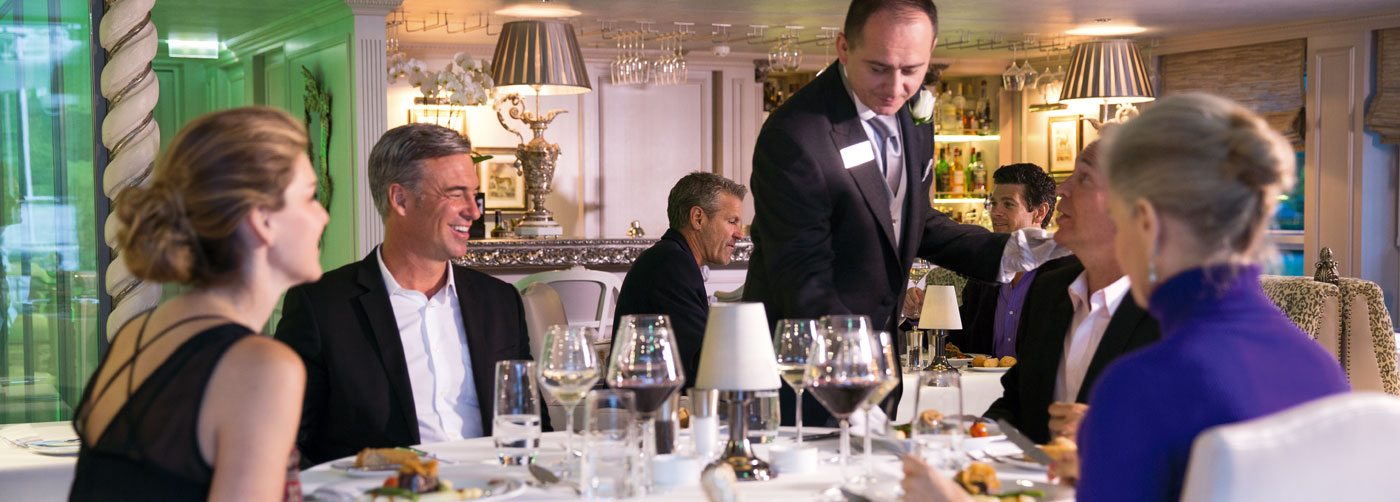
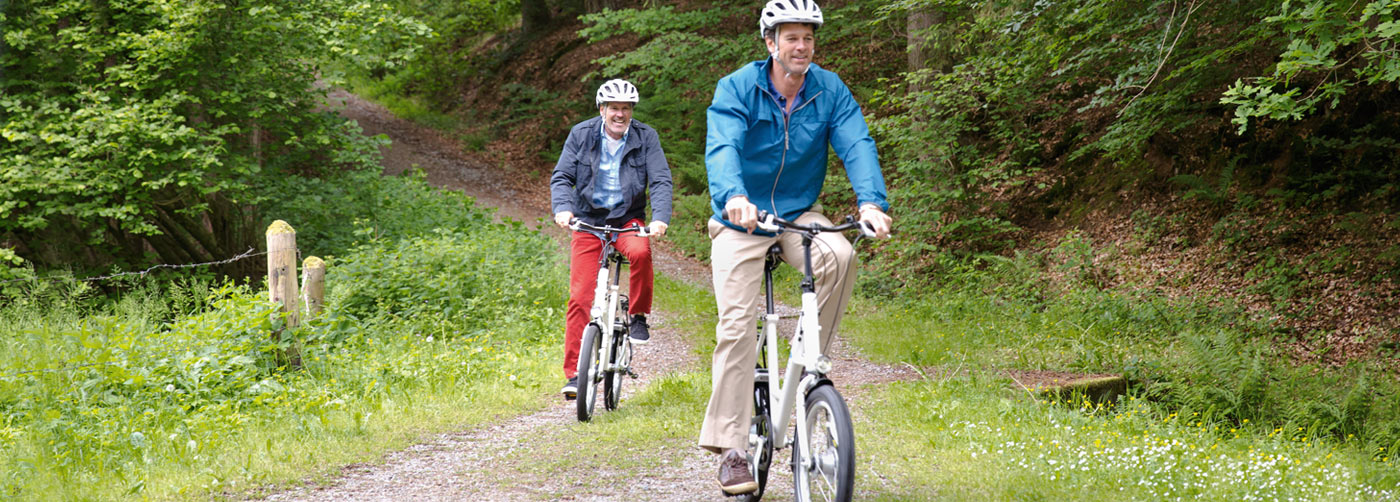
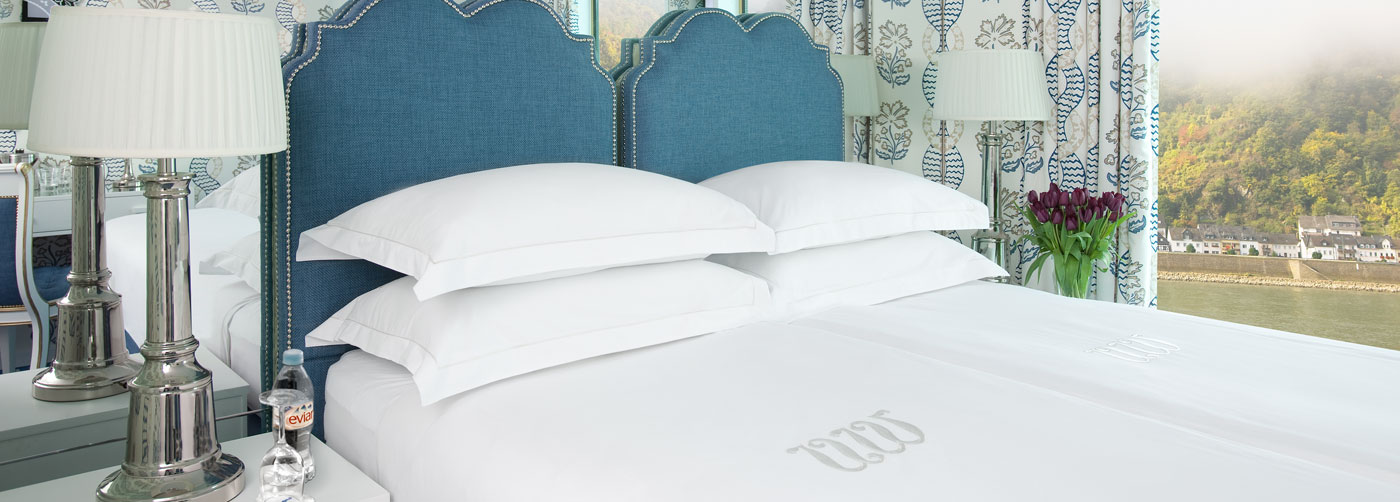
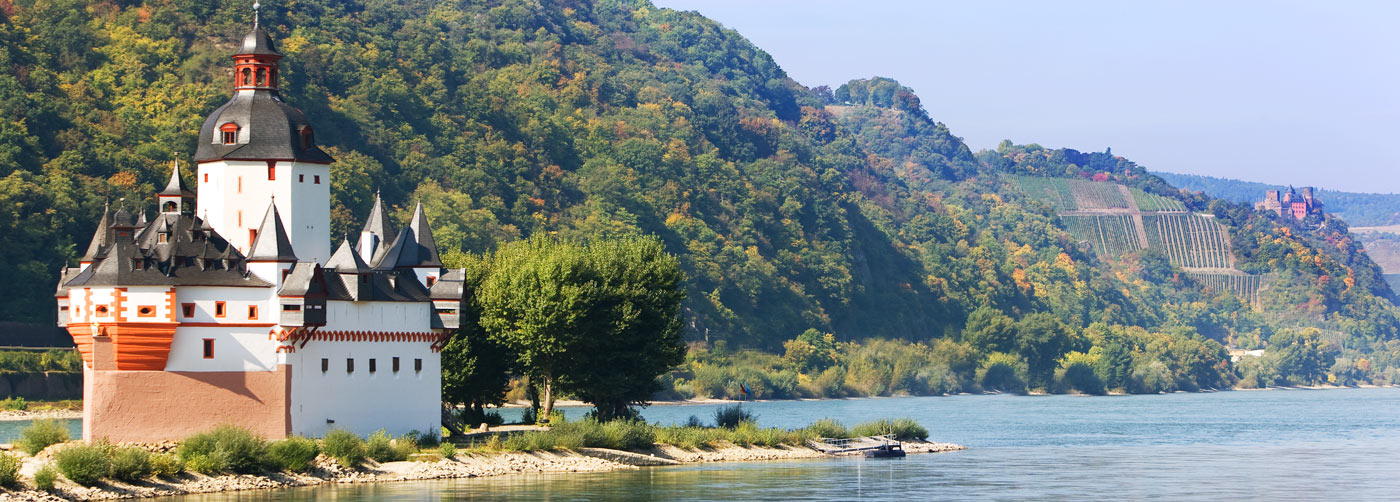
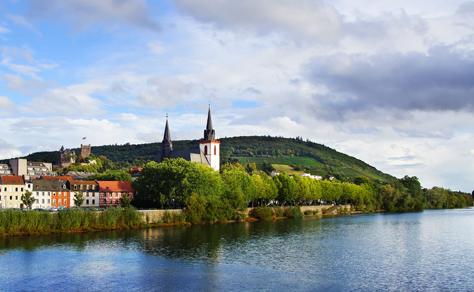
2024 | Find inspiration in the romantic, soul-stirring beauty of the fabled Rhine.
Learn More

2024 | Cruise along the Rhine through Germany, France and Switzerland to delight in the wide array of wonderful experiences this region is home to.
Learn More
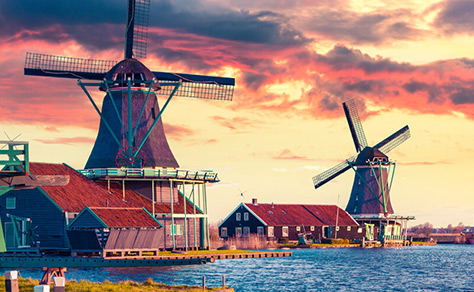
2024 | Explore Europe’s rich history and Jewish heritage on an incredible discovery of the Netherlands, Germany, France and Switzerland.
Learn More